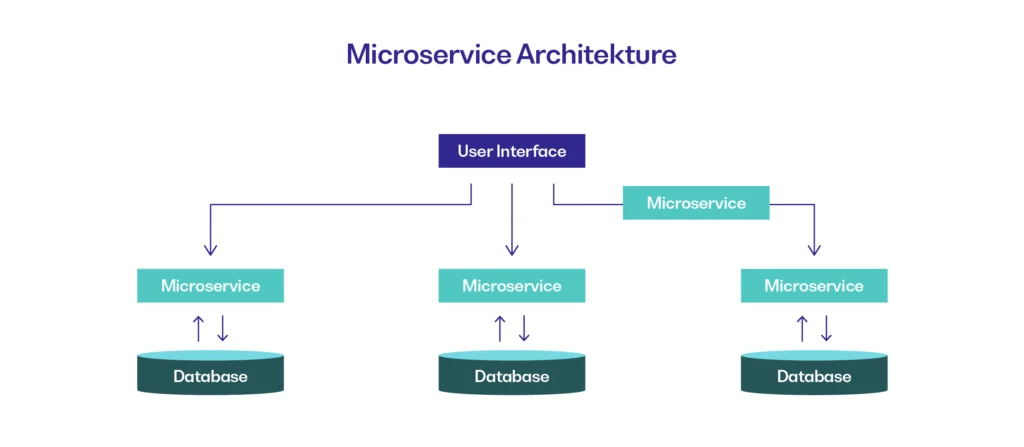APIs vs Microservices: Differences, functions, advantages
In this article, we’ll discuss the differences between APIs and microservices and explore how they can both help reach your business goals.
Intro
One of the latest evolutions in application architecture is the growth of microservices. Microservices architecture has been adopted by some of the world’s largest companies including Netflix, Amazon, and Uber. Forrester found that 76% of organizations believe that adopting microservices is a “crucial business agenda” since microservices allow for agile and adaptable applications.
However, microservices are often confused with APIs – with many not understanding the intricate difference between these two terms. Both terms are commonly used as both are vital to powering modern web applications.
In 2000, the first commerce APIs were launched – with Salesforce and eBay both championing a new “Internet as a Service” framework. By contrast, the term “micro-web-services” was first coined by Dr. Peter Rodgers in 2005 – and by the early 2010’s developers began to adopt the architecture as standard. As APIs facilitate microservices, the terms are often used interchangeably. However, this practice ignores fundamental differences between the two.
What are microservices? What are APIs? What are the differences between them? How do microservices use APIs? Why are microservices perfect for your company? In this article, we’ll discuss the differences between APIs and microservices and explore how they can both help you reach your business goals.
Want to compare microservices with the traditional monolithic architecture? Check out our article on the differences between microservices and monoliths here.
What is the difference between API and Microservices?
Both APIs and microservices are integral to the way modern web and cloud applications are developed. But, what are they?
What are Microservices?
Traditional applications are developed using a monolithic approach – where an application is built as a single, unified and indivisible unit. Applications are therefore developed as one stack, where back-end, front-end, and application logic are tightly integrated.
The need for more flexible applications and software exposed the limitations of traditional monoliths as it was difficult to maintain and update tightly coupled applications. Furthermore, with monoliths, individual services cannot be deployed independently. That’s why the microservices approach to software design became increasingly popular.
Microservice refers to a style of software architecture that breaks down an application into independent units and sees products as a collection of smaller services. The functionality of the application is split into services that communicate with each other through an API. Each service will likely aim to meet a singular business need.
These modules maintain their own database and are managed independently. There is, in fact, very little central management with a microservices application. Whilst this does lead to quite a bit of duplication of data, independent databases make it easier to maintain and upgrade specific services and sections of the app without knock-on effects for the rest of the system.

The aim of microservices is to create applications that are far more adaptable and easier to maintain. A bug or software fault in one microservice will only impact that one module, allowing the rest of the application to operate as normal.
With this greater modularity, it is easier for large companies to bring new services to market. This improves the scalability of applications, as many changes and upgrades can be handled simultaneously in a variety of different areas of the application.
Advantages of Microservices
Using microservices has some compelling advantages:
- As services are deployed independently of each other, microservice applications are far easier to repair and update. This is especially important when relating to multiple platforms and device builds. As previously mentioned, any fault or bug is kept tightly within the microservice and doesn’t affect the rest of the application.
- This modularity and composability lead to easier administration and training. The work and expertise needed to understand and work on a particular service are simplified by a microservice architecture. Teams designated to a microservice will only need to know and maintain that one substack.
- The use of microservices allows for more agile development and a DevOps working model. It shortens build, test and deploy cycles by separating services and features.
- Microservices are far more scalable. This is true at a technical level as designating resources and improving databases can happen at the service level and also at an organizational level, as features and updates can be rolled out to encourage sustainable business growth easily.
What is API?
Application Programming Interfaces or APIs are the protocols that allow for the transfer of data between different applications and services. You can think of APIs as gateways or doors to services. It allows software developers to access the databases of applications easily and allows for applications to talk between one another. Applications such as microservices.
Microservices are built on APIs – it is an API that allows microservices to talk to one another, facilitating the necessary data transfers to build one large application.
One of the most ubiquitous and visible examples of APIs at work are the “Sign in with Google” or “Sign in with Facebook” services. Consider a scenario where you’d like to sign into a third-party store web app with Google. How does the store know that you’ve signed into Google?
An app that allows you to sign in with a Google account use the OAuth2.0 API in the following way:
- First, the commerce app requests a token from Google’s Authorization Server to access the API. Then, users are redirected to a Google URL to sign in. Here, they’ll give consent for the application to access their private data.
- Once the user has logged in and given consent, an “authorization code” is sent back to the application. The application can then exchange this code for an “access token” – which contains the security credentials for a session and identifies the user. The app also receives a refresh token, which can be used to request a new access token when the current one expires.
APIs like these handle billions if not trillions of requests every day connecting all parts of the web together.
The Difference Between APIs and Microservices
By defining each of these terms, the inherent difference between APIs and microservices should now be obvious. Let’s recap:
- Microservices are a software architecture style that sees applications as a collection of smaller services which interact with each other and maintain their own databases.
- APIs, on the other hand, are what facilitate these communications between microservices. But their role extends further than microservices, and they are the primary way developers can interact with applications and connect products and services together. Monolithic applications can and most likely will make use of APIs also.
Should your organization adopt microservices with APIs over monoliths?
Microservices may be of more benefit to larger companies with sprawling userbases and multiple services and functions. That’s why some of the largest tech firms like Amazon, Netflix and Uber have been quick to adopt them.
The organizational benefits of microservices are most visible when companies are able to form small teams to specialize in and maintain individual microservices or sections of an application. If scalability is key for your business, microservices are by far the best approach to take.
However, smaller businesses may struggle to maintain a microservice application and might find it easier to develop applications using a traditional monolithic approach. Where the initial implementation is a key concern, monoliths are brilliant for smaller companies and start-ups. This is because microservices are unnecessary for smaller, less complex applications.
This is especially the case for lightweight offline applications. There’s no reason an offline word processor or utility program would need to be a microservice. Monoliths are also far more suitable for applications that aren’t planned to be maintained or updated regularly.
In a nutshell: API vs. Microservices
APIs are an essential part of the microservices approach to software development. However, the role of APIs extends further than the requirements to facilitate microservices. They are just as vital in facilitating communication between applications – even monolithic ones.
Microservices can help future-proof your business, allowing you to scale and operate more flexibly than ever before. Microservices, connected via APIs, facilitate a fail-fast mentality often cited as necessary for the modern business landscape, where consumer demands are ever-expanding and markets are ripe for disruption. By breaking down their applications into smaller services that can be independently deployed and managed, businesses can react quickly to changes in customer demands or market conditions. This agility is essential for competing in an increasingly digital world where the pace of innovation is only accelerating.

Evaluation methodology.
Working together with scientists and industry leaders from the respective cloud areas, our evaluations are based on an industry peer review standard that meets the highest standards of objectivity. All the insights are combined in a single figure, which means they can be applied more easily and effectively from both a technical and a business perspective.
















